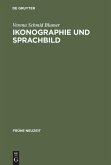Study of the reception accorded to Stoic philosophy in major 17th century German tragedies reveals the conceptual foundations of the incipient modern age from the vantage of tradition. In this approach, Stoic philosophy is freed of the reduction to the phenomenon of constantia typical of previous research on the Baroque and is taken seriously as a philosophy of culture of the kind represented throughout the works of Seneca. The analysis from the viewpoint of the history of ideas foreground the Stoic premise of secundum naturam vivere and shows how the early modern age represented a dead end for Stoic philosophy in a 'modern', practical form.
Die Untersuchung zur Rezeption der stoischen Philosophie in zentralen Tragödien des 17. Jahrhunderts von Andreas Gryphius (1616-1664) (»Leo Armenius«, »Catharina von Georgien«, »Papinian«) und Daniel Casper von Lohenstein (1635-1683) (»Cleopatra«, »Agrippina«, »Epicharis«) nimmt sich vor, die ideellen Fundamente der beginnenden Neuzeit aus der Warte der Tradition aufzudecken. Die stoische Philosophie wird von ihrer bisherigen in der Barockforschung topischen Reduzierung auf eine ars moriendi und auf das Phänomen der constantia befreit und als Kulturphilosophie ernstgenommen, wie sie sich im gesamten Werk Senecas, in seinen Briefen, Dialogen und Tragödien, manifestiert. Dort entwickelt sie unter der Prämisse des secundum naturam vivere eine Ethik Lebens und Handelns auf der Basis des traditionellen Naturrechts und des Gewissens.
Die ideengeschichtliche Analyse zeigt, wie diese Konstanten in den frühneuzeitlichen Tragödien auftreten und die Anforderungen der modernen staatstheoretischen Entwürfe und des neuen konstruierten Naturrechts einer Kritik unterziehen. Die Dramen reflektieren dabei die zeitgenössischen wissenschaftlichen Entwicklungen, deren Naturverständnis die Grundlagen für das moderne konstruierte Naturrecht schaffen. Sie zeigen auf vielfältige Weise, daß es keine echten Stoiker mehr geben kann, da den Voraussetzungen für eine praktische stoische Philosophie in der Frühen Neuzeit der Boden entzogen ist.
Die Untersuchung zur Rezeption der stoischen Philosophie in zentralen Tragödien des 17. Jahrhunderts von Andreas Gryphius (1616-1664) (»Leo Armenius«, »Catharina von Georgien«, »Papinian«) und Daniel Casper von Lohenstein (1635-1683) (»Cleopatra«, »Agrippina«, »Epicharis«) nimmt sich vor, die ideellen Fundamente der beginnenden Neuzeit aus der Warte der Tradition aufzudecken. Die stoische Philosophie wird von ihrer bisherigen in der Barockforschung topischen Reduzierung auf eine ars moriendi und auf das Phänomen der constantia befreit und als Kulturphilosophie ernstgenommen, wie sie sich im gesamten Werk Senecas, in seinen Briefen, Dialogen und Tragödien, manifestiert. Dort entwickelt sie unter der Prämisse des secundum naturam vivere eine Ethik Lebens und Handelns auf der Basis des traditionellen Naturrechts und des Gewissens.
Die ideengeschichtliche Analyse zeigt, wie diese Konstanten in den frühneuzeitlichen Tragödien auftreten und die Anforderungen der modernen staatstheoretischen Entwürfe und des neuen konstruierten Naturrechts einer Kritik unterziehen. Die Dramen reflektieren dabei die zeitgenössischen wissenschaftlichen Entwicklungen, deren Naturverständnis die Grundlagen für das moderne konstruierte Naturrecht schaffen. Sie zeigen auf vielfältige Weise, daß es keine echten Stoiker mehr geben kann, da den Voraussetzungen für eine praktische stoische Philosophie in der Frühen Neuzeit der Boden entzogen ist.








